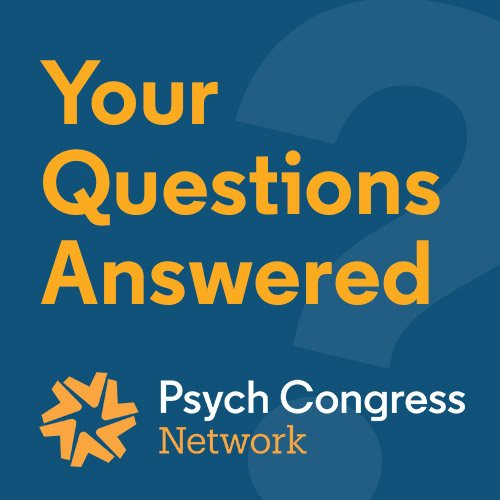ADVERTISEMENT
Treating Patients Who Develop Tolerance Toward Stimulants
In this occasional feature, members of the Psych Congress Steering Committee answer questions asked by audience members at Psych Congress meetings.
QUESTION: How do you deal with patients with ADHD developing tolerance toward stimulants and needing higher doses than you are comfortable prescribing?
ANSWER: Great question! This is a common clinical dilemma faced by many of us. To best address this issue, here is an 7-point action plan of action for you to consider.
1. Is the dose of the stimulant the patient is currently on at the maximum recommended as per the package insert? If not, dose optimization may be needed.
2. Is the diagnosis accurate? Based on some of my own previous mistakes, I’ve had poor outcomes when the patient’s diagnosis is incorrect. if diagnosis is incorrect, taking appropriate steps will enhance treatment outcomes.
 3. Is there an important comorbidity that’s been missed? Again, based on my own previous mistakes, a comorbidity such as an anxiety or mood disorder, if missed, leads to suboptimum response to stimulants. Should such a comorbidity be uncovered, please treat it too, as this may make the stimulant more effective.
3. Is there an important comorbidity that’s been missed? Again, based on my own previous mistakes, a comorbidity such as an anxiety or mood disorder, if missed, leads to suboptimum response to stimulants. Should such a comorbidity be uncovered, please treat it too, as this may make the stimulant more effective.
4. Even expert psychopharmacologists should never forget to add nonpharmacological treatments to improve the output from stimulants. School-based interventions, CBT, coaching, physical exercise, mindfulness training, etc. can all help decrease the need for dose escalation.
5. Development of tolerance to stimulants is a fact of life for many patients. Consider switching to another class of stimulant; this is often an appropriate step to take. Also, adding an augmentation medication often does help. For example, in children and adolescents, both extended-release clonidine and extended-release guanfacine are FDA-approved for augmentation therapy.
6. In some patients, when all else fails, I will—if appropriate and safe for that patient—slowly increase the dose of a stimulant to above the label range. I always get informed consent to do so and watch the vital signs carefully. Obviously, one has to be watchful about medication diversion and abuse potential.
7. And finally, when truly stuck, getting a medication consultation from an expert colleague should be considered. Sometimes such a consultation offers ideas not previously considered and I personally value thoughts from colleagues when a complex situation arises.
I hope this 7-step plan of action will assist you in helping your complex ADHD patients.
— Psych Congress cochair Rakesh Jain, MD, MPH, Clinical Professor, Department of Psychiatry, Texas Tech Health Sciences Center School of Medicine, Midland
MORE QUESTIONS ANSWERED:
Distinguishing Between ADHD and Past Trauma
Tips for Starting Patients on Long-Acting Injectables
Can Dextromethorphan Be Used in the Treatment of Mood Disorders?
The Role of Inflammation in the Pathophysiology of Schizophrenia













